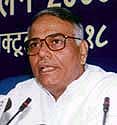Thrust to infrastructure development
28 Feb 2002
Power
 The Accelerated Power
Development Programme (APDP) has been redesigned as the Accelerated
Power Development and Reform Programme (APDRP), with an enhanced plan
allocation of Rs 3,500 crore for 2002-03, up from Rs 1,500 crore this
year. Access of the states to the fund will be on the basis of agreed
reform programmes, the centre piece of which would be the narrowing
and ultimate elimination of the gap between unit cost of supply and
revenue realisation within a specified time frame. Accordingly, the
focus of reform has shifted from generation to transmission and
distribution.
The Accelerated Power
Development Programme (APDP) has been redesigned as the Accelerated
Power Development and Reform Programme (APDRP), with an enhanced plan
allocation of Rs 3,500 crore for 2002-03, up from Rs 1,500 crore this
year. Access of the states to the fund will be on the basis of agreed
reform programmes, the centre piece of which would be the narrowing
and ultimate elimination of the gap between unit cost of supply and
revenue realisation within a specified time frame. Accordingly, the
focus of reform has shifted from generation to transmission and
distribution.
A high-level monitoring group will oversee the progress of this programme. Allocation for this programme will be augmented by loans on concessional terms from the Power Finance Corporation (PFC).
Roads
While stating that the National Highway Development Programme (NHDP) launched three years ago was "progressing well," Sinha announced that the Golden Quadrilateral Project connecting the four metros would be completed by December 2003 a year ahead of schedule. He said the project would achieve financial closure by the end of fiscal 2002 through multilateral funding and borrowings by the National Highway Authority of India (NHAI) with government guarantees.
Ports
The finance minister has proposed the corporatisation of the major ports in a phased manner. Stating that 17 projects worth more than Rs 4,500 crore had already been approved and another eight projects worth more than Rs 3,200 crore were under consideration, Sinha said private investments in the port sector would be stepped up and the regulatory structure would be strengthened.
Civil Aviation
The government had recently announced the upgradation of the international airports at Delhi, Mumbai, Chennai and Kolkata through private sector participation. Sinha announced that the modalities for inviting offers had been finalised and the process will be completed by the end of the next fiscal (2002-03).
To encourage private sector participation in greenfield airports, Sinha announced a package of concessions, including:
- Availability of land and related infrastructure from the state governments.
- Exemption from levy of Inland Air Travel Tax (IATT) and Foreign Travel Tax (FTT) on departing passengers for projects located in states that charge sales tax on aviation turbine fuel (ATF) at central sales tax (CST) rate.
- Charging of advance development fee (ADF) by way of additional passenger service fee (PSF) at the existing airports for help in financing of the greenfield airport.
- Levy of user development fee (UDF) at the new airport.
- Financial assistance/equity participation by the Airports Authority of India.
The proposed new airports in Bangalore and Hyderabad will benefit from these concessions.
Urban Development
Sinha has proposed an Urban Reform Incentive Fund (URIF) with an initial allocation of Rs 500 crore to provide reform-linked assistance to the states. The fund will seek to incentivise reforms in the following areas:
- Reform of rent control laws and repeal of the Urban Land Ceiling Acts.
- Rationalisation of high stamp duty regimes.
- Revision of bye-laws to streamline the approvals process for construction of buildings, development of sites, etc.
- Revision of municipal laws in line with model legislation prepared by the Ministry of Urban Development and Poverty Alleviation.
- Simplification of legal and procedural frameworks for conversion of agricultural land for non-agriculture purposes.
- Levy of realistic user charges and resource mobilisation by urban local bodies.
- Initiation of public private partnership in the provision of civic services.
Sinha also announced the setting up of a City Challenge Fund (CCF) to finance the transitional costs of moving towards sustainable and creditworthy institutional systems of municipal management and service delivery. The FM also proposed a Pooled Finance Development Scheme to assist local bodies to access the markets based on their creditworthiness. To provide a further incentive for urban local bodies to become creditworthy and to invest in urban infrastructure, Sinha announced the issue of municipal tax free bonds up to Rs 500 crore in 2002-03, up from Rs 200 crore in the current fiscal. Tourism
The Plan Outlay for tourism has been increased by 50 per cent to Rs 225 crore for 2002-03. Sinha has proposed a comprehensive tourism development package. The main features of this package are:
- Six tourism circuits will be identified for development to international standards during 2002-03.
- Special Purpose Vehicles (SPVs) will be permitted to raise resources from both public and private sectors for infrastructure development in these circuits.
- The Hampi site in Karnataka will be developed as an international destination for tourism based on an integrated master plan.
Infrastructure Finance
Sinha has proposed the following measures to facilitate faster private investment in infrastructure facilities:
- An Infrastructure Equity Fund of Rs 1,000 crore will be set up to help in providing equity investment for infrastructure projects. Contributions to the fund, which will be managed by the Infrastructure Development Finance Company (IDFC), will initially come from public sector insurance companies, financial institutions and some banks.
- An institutional mechanism will be set up to coordinate the debt financing by financial institutions and banks of infrastructure projects larger than Rs 250 crore. IDFC will act as the coordinating institution with primary responsibility for the different sectors being shared with the IDBI and ICICI.
- Public-private partnerships will be encouraged for the provision of infrastructure facilities, the modalities for which are being worked out by a task force.






























